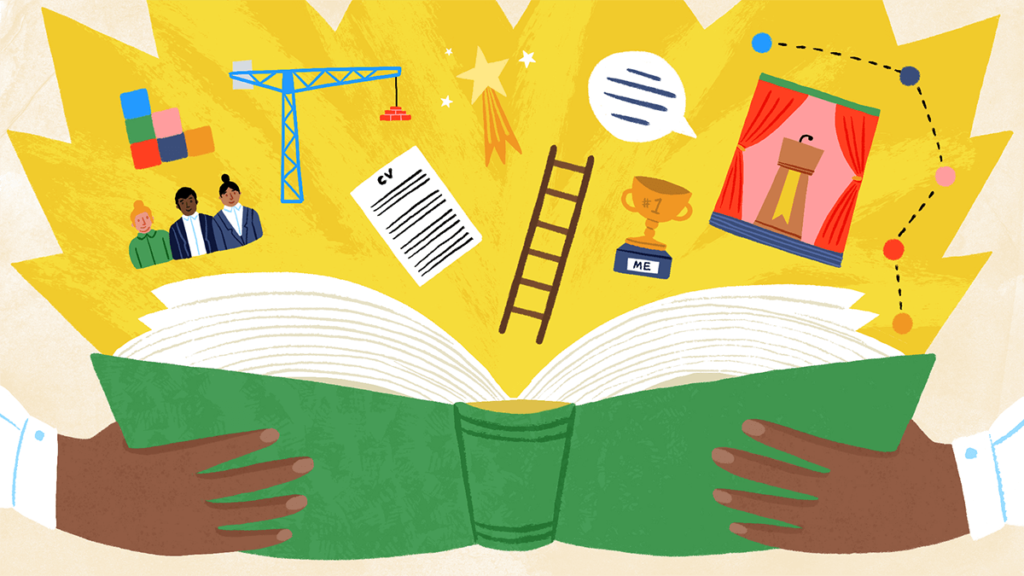Storytelling is a crucial part of sales, recruitment, finding a job, and it is a crucial social skill. It can have the power to influence, engage and persuade people. It is also really important to your mindset. How do you think about what has happened to you? What does it mean for the future?
I’ve not really thought about what kind of stories I like. I tend to prefer non-fiction stories in real life, such as history like Genghis Khan, Roman Empire, and people’s amazing life stories. I find that the stories are so rich and interesting and have so much meaning. Fiction I know that its not real so I feel less inclined to invest time into it. I feel that learning about history or real stories is so much better, there are so many amazing things that have happened that you can’t ever imagine.

I’ve noticed that many hollywood films seem to have a very similar style and story. It seems like they have mastered the story and keep repeating the same successful formula.
- Create rapport
- Grab their attention. Why is it important? Why should they listen? What will they get from the story?
- Set the scene / mood
- Make it rich, like a movie, describe it.
- Ask questions – let them imagine. “What do you think he said?” etc.,

Rocky is one of the most inspirational stories. But the movies are not just amazing stories, there is also a fascinating story of Sylvester Stallone behind the movie and how he created it which is also a great story.
Important parts of storytelling:
- Be a great speaker – tone, pitch, body language etc., as here.
- Emotionally engaging
What are the parts of a story?
These five components are: the characters, the setting, the plot, the conflict, and the resolution.
- Characters – what do they want? whats their goal?
- Beginning – setting a scene
- Middle – some kind of struggle or conflict
- End – and then a resolution

Types of Stories:
- 1.2.1Overcoming the monster
Definition: The protagonist sets out to defeat an antagonistic force (often evil) which threatens the protagonist and/or protagonist’s homeland. - 1.2.2Rags to riches
Definition: The poor protagonist acquires power, wealth, and/or a mate, loses it all and gains it back, growing as a person as a result. - 1.2.3The quest
Definition: The protagonist and companions set out to acquire an important object or to get to a location. They face temptations and other obstacles along the way. - 1.2.4Voyage and return
Definition: The protagonist goes to a strange land and, after overcoming the threats it poses or learning important lessons unique to that location, they return with experience. - 1.2.5Comedy
Definition: Light and humorous character with a happy or cheerful ending; a dramatic work in which the central motif is the triumph over adverse circumstance, resulting in a successful or happy conclusion.[2] Booker stresses that comedy is more than humor. It refers to a pattern where the conflict becomes more and more confusing, but is at last made plain in a single clarifying event. The majority of romance films fall into this category. - 1.2.6Tragedy
Definition: The protagonist is a hero with a major character flaw or great mistake which is ultimately their undoing. Their unfortunate end evokes pity at their folly and the fall of a fundamentally good character. - 1.2.7Rebirth
Definition: An event forces the main character to change their ways and often become a better individual.
Whats the message of the story?
What makes a great story?
- Authentic / relatable
- Simple – easy to understand
- Original
- Beautiful language
- Humour / funny
- Varied / has different rythmn
- Unexpected – you are not expecting, you are in suspense
- Engaging
- Interesting
- You learn something from it / become better in some way
- As short as it needs to be
Tools:
- Deepen plot with subplots
- Go back and forth between different parts – give a taste
The Rule of Three
The third event in a series of events becomes “the final trigger for something important to happen.” This pattern appears in childhood stories, like Goldilocks and the Three Bears, Cinderella, and Little Red Riding Hood.
In adult stories, the Rule of Three conveys the gradual resolution of a process that leads to transformation. This transformation can be downwards as well as upwards.
Booker asserts that the Rule of Three is expressed in four ways[citation needed]:
-
- The simple, or cumulative three, for example, Cinderella’s three visits to the ball.
- The ascending three, where each event is of more significance than the preceding, for example, the hero must win first bronze, then silver, then gold objects.
- The contrasting three, where only the third has positive value, for example, The Three Little Pigs, two of whose houses are blown down by the Big Bad Wolf.
- The final or dialectical form of three, where, as with Goldilocks and her bowls of porridge, the first is wrong in one way, the second in an opposite way, and the third is “just right”.[3]
How to improve?
- Practice telling stories. The more times you do it the better you do.
- Write down stories
- Video yourself telling stories – put it on Youtube.
- Seek feedback.
I plan to write some stories about my life / experiences and share some stories that I like.
What’s your favourite story?
